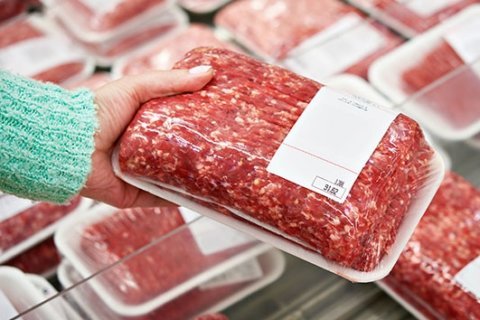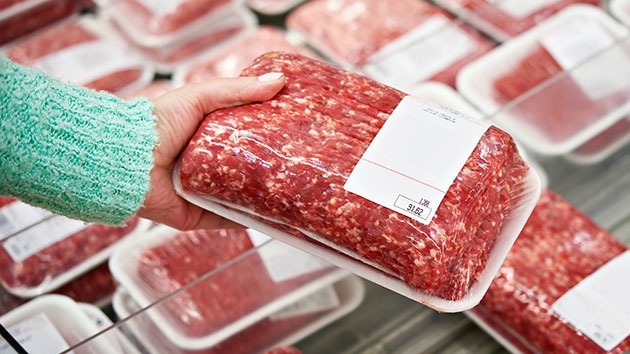

Tests of ground beef purchased at retail stores have been negative for bird flu so far, the U.S. Department of Agriculture announced Wednesday, after studying meat samples collected from states with herds infected by this year’s unprecedented outbreak of the virus in cattle.
The results “reaffirm that the meat supply is safe,” the department said in a statement published late Wednesday after the testing was completed.
Health authorities have cited the “rigorous meat inspection process” overseen by the department’s Food Safety Inspection Service, or FSIS, when questioned about whether this year’s outbreak in dairy cattle might also threaten meat eaters.
“FSIS inspects each animal before slaughter, and all cattle carcasses must pass inspection after slaughter and be determined to be fit to enter the human food supply,” the department said.
The National Veterinary Services Laboratories tested 30 samples of ground beef in total, which were purchased at retail outlets in states with dairy cattle herds that had tested positive.
To date, dairy cattle in at least nine states — Colorado, Idaho, Kansas, Michigan, New Mexico, North Carolina, Ohio, South Dakota and Texas — have tested positive for H5N1, which is often lethal to poultry and other animals, like cats, but has largely spared cattle aside from sometimes disrupting their production of milk for a few weeks.
A USDA spokesperson said the ground beef they tested came from stores in only eight of those states. Colorado was only confirmed to have H5N1 in a dairy cow after USDA had collected the samples. The spokesperson did not comment on whether beef from stores in additional states would be sampled.
More results from the department related to bird flu in beef are expected soon. Samples collected from the beef muscle of dairy cows condemned by inspectors at slaughter facilities are still being tested for the virus. The department is also testing how cooking beef patties to different temperatures will kill off the virus.
“I want to emphasize, we are pretty sure that the meat supply is safe. We’re doing this just to enhance our scientific knowledge, to make sure that we have additional data points to make that statement,” Dr. Jose Emilio Esteban, USDA under secretary for food safety, told reporters Wednesday.
The studies come after the USDA ramped up testing requirements on dairy cattle moving across state lines last month in response to the outbreak.
Officials said that was in part because it had detected a mutated version of H5N1 in the lung tissue of an asymptomatic cow that had been sent to slaughter. While the cow was blocked from entering the food supply by FSIS, officials suggested the “isolated” incident raised questions about how the virus was spreading.
Signs of bird flu have also made its way into the retail dairy supply, with as many as one in five samples of milk coming back positive in a nationwide Food and Drug Administration survey.
The FDA has chalked those up to harmless fragments of the virus left over after pasteurization, pointing to experiments showing that there was no live infectious virus in the samples of products like milk and sour cream that had initially tested positive.
But the discovery has worried health authorities and experts that cows could be flying under the radar without symptoms, given farms are supposed to be throwing away milk from sick cows.
One herd that tested positive in North Carolina remains asymptomatic and is still actively producing milk, a spokesperson for the state’s Department of Agriculture and Consumer Services told CBS News.
It remains unclear how H5N1 has ended up in the milk supply. Don Prater, the FDA’s top food safety official, said Wednesday that milk processors “can receive milk from hundreds of different farms, which may cross state lines,” complicating efforts to trace back the virus.
“This would take extensive testing to trace it that far,” Bailee Woolstenhulme, a spokesperson for the Utah Department of Agriculture and Food, told CBS News.
Woolstenhulme said health authorities are only able to easily trace back milk to so-called “bulk tanks” that bottlers get.
“These bulk tanks include milk from multiple dairies, so we would have to test cows from all of the dairies whose milk was in the bulk tank,” Woolstenhulme said.














